angling
Angling
is the art of catching fish with a rod and line. It is called Angling
because the rod and line form an angle. The sport of angling is
enjoyed by over 3 million men, women and children. There are other
forms of fishing such as the use of nets, generally for commercial
fishing purposes. Some people fish to catch food but angling is
purely for sport.
 |
A hooked fish -
Trout fishing |
COARSE
FISHING
Coarse fishing is the most popular fishing sport. Coarse fish are
divided into two groups - predatory fish (Piscavors) like the Perch
and Pike which eat other fish, and Non-predatory fish (Cyprinids)
such as carp, roach and rudd. Both are caught by anglers. They generally
use a hook with bait on or a lure to catch these fish. Most fish
are returned to the water after being caught by Coarse fishermen.
There is a closed season from mid March to mid June on rivers and
streams and some still water, to allow fish to breed. In Cornwall,
Coarse fishing is almost exclusively on still waters.
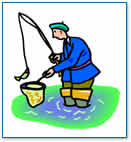 |
Fishing |
• The bait used will vary
depending on the preferred diet of the fish. Most anglers use maggots,
others use natural baits such as lobworms or mussels, some even
use bread or bacon.
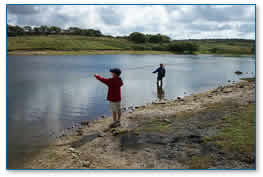 |
Fly fishing |
• Lures are an imitation of small fish and include spinners,
spoons and plugs. The secret of lure fishing is to keep the lure
moving so that it appears to be a live fish and will attract predators.
GAME FISHING
Game fishing accounts for nearly one million anglers. Where the
river is wider and easier to fish, most game anglers use artificial
flies. These are hooks that are disguised with feathers, hair and
thread, etc to look like insects or small fry that fish feed on.
This is called fly fishing. They also use spinners and occasionally
bait. In Cornwall, because the rivers are generally small and often
overgrown, spinners and bait, particularly garden worms, are much
more popular.
Game fish include salmon, trout,
sea trout and grayling. They can be found in rivers, streams, lakes,
reservoirs and estuary waters. These fish are often caught to be
eaten, but as the numbers of fish has declined they are increasingly
released back into the water. Fishing seasons vary from region to
region and depend on the species of fish and its spawning time.
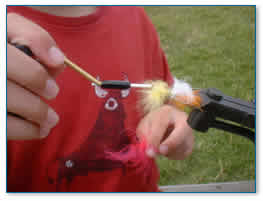 |
 |
Fly tying |
A fishing fly |
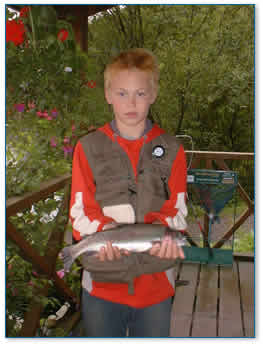 |
A good catch -
pupil and fish |
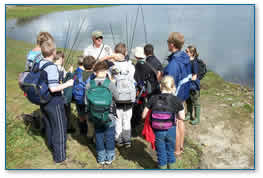 |
Stithians young
fishing group |
Fly fishermen, particularly trout
fishermen, need to know about insect life cycles and the feeding
patterns of game fish. Dry fly fishing imitates natural flies that
sit on the water. Wet fly fishing uses flies that sink below the
surface of the water. Nymph fishing uses flies that imitate aquatic
larvae (G1).
Most anglers do not own their own stretch of river or fishing pond
and they join fishing clubs or syndicates. At some fisheries, both
rivers and ponds, a day's fishing can be hired. See Angling
2000 web site or (B05a)
for further details.
Many angling clubs and youth
groups run courses for young people to learn about fly fishing and
coarse fishing.
|

